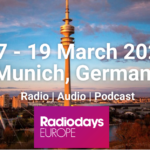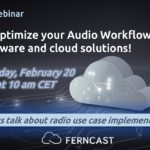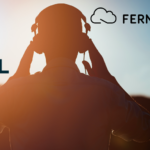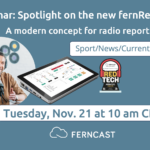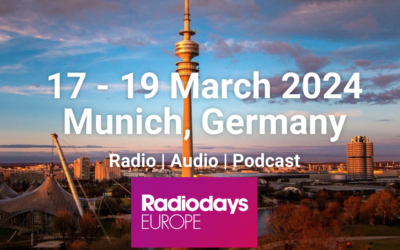Published in RedTech Tribe Magazine Jan/Feb 2021
Cologne, Germany- Nearly a quarter of people in Europe and North America, who listen regularly to podcasts, use online media libraries, or access other online on-demand audio content. As evidenced by the rise of such on-demand video platforms as Netflix, YouTube, and others, consumers are becoming increasingly accustomed to having content available on-demand rather than being required to wait for shows to air. As audience expectation shifts to on-demand content, it’s important to remember that it is easier than ever to create podcasts to serve different niches. With increasing demand comes growing need for content creators and providers to have a stable and effective infrastructure for content processing and delivery. There are numerous providers of cloud encoding services on the market. While it may be convenient for some content providers to depend on service providers for handling the workflow, it may be preferable for others to have in-house solutions with the ability to quickly adapt and customize workflows and to have full control over the encoding and the publishing process. For content creators who also provide live online audio, for example with Icecast or HLS, there is additional advantage that such a solution could be combined with the live streaming application on the same devices. In the long run, a self-hosted solution tends to be more affordable for the content creator than in a subscription model. What defines a ‘good’ implementation in this regard can be more clearly defined. First, the application needs to be flexible relative to quality (bitrates, etc.) with formats that support the greatest possible variety of end devices and listener circumstances. Considering that download and upload bandwidths vary considerably depending on country, region, and means of aces, this means allowing the audio to be delivered at multiple quality levels, automatically adapting to the listener’s circumstances.
Implementation
The best transport protocols under these considerations are HLS (HTTP Live Streaming) and MPEG DASH (Dynamic Adaptive Streaming over HTTP), as these can dynamically adapt to network circumstances. For codec algorithms, this use case suggests Opus and Fraunhofer’s new xHE-AAC (Extended High Efficiency AAC), which are similarly optimized for adaptive application scenarios. In contrast, creating high-fidelity content with FLAC (Free Lossless Audio Codec) for desktop computers and other fixed devices within the domestic Wi-Fi network would be another use case to serve audio that could satisfy a variety of end users. The audio must be compatible with all possible end devices and platforms. Audio-on-demand is made available in a wide variety today, being offered to the consumer via various online sites and accessed through devices such as personal computers, smartphones, Sonos systems and Amazon Echos. Each of these represents a significant market share and listener base and should not be neglected and users accessing audio-on-demand content over a variety of devices are especially likely to notice and be disturbed by compatibility issues. A specific aspect of this is that different platforms have different loudness and level requirements that the solution must accommodate for consistent cross-platform performance. This makes in-built loudness controls and the ability to process different files for different end devices both essential characteristics. Second, if content is king, then metadata is queen. This idea is admittedly not new, but it is expected that metadata aside from title and artist will become increasingly important, which means any on-demand solution should have extensive support for metadata ingest. For example, a navigation within long on-demand files in the form of audio-chapters carried in MP4 containers or ID3 tags, will increase the user experience most notably for the ‘generation skip.’ Even transporting visuals in a standardized manner may gain importance due to the broad availability of high definition displays from smartphones to car dashboards. Even on the ingest side, metadata is indispensable for an efficient and highly automated encoding process. There are good reasons to offer FLAC encoding for your classical concert, but there seem little reasons to encode your telephone interview this way. Different encoding methods can be triggered flexibly with metadata to achieve the best quality for a specific type of audio content with no encoding overhead. Solutions that meet these requirements such as Ferncast’s aixtream on-demand functionality, are sure to improve a content creators ‘ability to provide excellent audio-on-demand experiences for their listeners, independent of their circumstances. At the same time, such a solution improves the content creator’s control over their own content, which can have a variety of benefits depending on application. As audio-on-demand proliferates, more and more creators will choose to switch to such a solution to maintain control over the reception character of their content.
aixtream in use
Deutschland Radio is implementing the aixtream on-demand option, to automate the encoding for delivery of audio content fitted to its native products like the Dlf Audiothek app and websites. The German national public broadcaster uses a geo-redundant setup with a synchronized pair of two encodes for load balancing and failover purposes as its sites in Berlin and Cologne. At the broadcaster’s three stations, Deutschlandfunk, Deutschlandfunk Kultur and Deutschlandfunk Nova, about 300 to 600 audio files a day are exported by the broadcast-processing and handed over to the aixtream installations for sound processing and encoding. Besides progressive media downloads, Deutschland Radio also delivers segmented on-demand content via HLS. Enabled by aixtream and the availability of xHE-AAC decoder through Android 9 and iOS 14 devices, Deutschlandradio plans to use Fraunhofer’s latest coding technologies to deliver xHE with CMAF for live and on-demand streaming.



